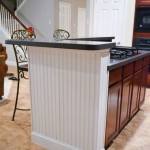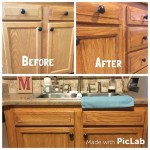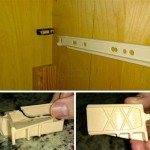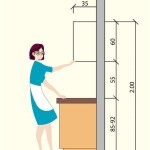Essential Aspects of Kitchen Cabinet Design Dimensions
Kitchen cabinet design dimensions are essential for creating a functional and aesthetically pleasing space. They impact the overall layout, storage capacity, and accessibility of the kitchen.
Understanding the key dimensions of kitchen cabinets helps designers and homeowners plan an efficient and comfortable kitchen. This article explores the essential aspects of kitchen cabinet design dimensions, including standard cabinet sizes, ergonomic considerations, and space optimization techniques.
Standard Cabinet Sizes
Standard cabinet sizes have been established to streamline the design and manufacturing process. Common cabinet widths include 12 inches, 15 inches, 18 inches, 24 inches, and 30 inches. These widths accommodate various storage needs, from small utensils to bulky cookware.
Cabinet heights typically range from 30 inches to 42 inches, with 36 inches being the most common. Depth dimensions vary between 12 inches and 24 inches, depending on the type of cabinet and its intended use.
Ergonomic Considerations
Kitchen cabinet design dimensions should also consider ergonomic principles for optimal functionality and comfort. The height of countertops and cabinets should allow users to reach and access items easily without straining or bending excessively.
The space between cabinets, known as the "knee space," should be sufficient to provide ample legroom for comfortable operation. Door swings and drawer clearances should also be designed to minimize interference and maximize usability.
Space Optimization Techniques
In smaller kitchens or when maximizing storage capacity is a priority, space optimization techniques can be employed. Corner cabinets utilize otherwise wasted space, while pull-out drawers make it easier to access items stored in deep cabinets.
Vertical storage solutions, such as tall pantries and stackable shelves, take advantage of height to increase storage capacity without taking up excessive floor space. Lazy Susans, which rotate within cabinets, provide easy access to items stored in corners or at the back.
Conclusion
Kitchen cabinet design dimensions are crucial for creating a functional, ergonomic, and space-optimized kitchen. Understanding standard cabinet sizes, ergonomic considerations, and space optimization techniques enables designers and homeowners to create kitchens that meet their specific needs and preferences.

Standard Kitchen Dimensions And Layout Engineering Discoveries Plans Cabinet Room Design

Kitchen And Dining Area Measurements Standards Guide

Standard Kitchen Dimensions And Layout Engineering Discoveries Plans Furniture Design

Kitchen Cabinets 101 Cabinet Shapes Styles Cabinetcorp

Kitchen Design Symmetry Versus Functionality

Helpful Kitchen Cabinet Dimensions Standard For Daily Use Engineering Feed

Woodcraft Custom Kitchen Cabinet Measurements

Remodel Your Home Design Studio With Perfect Helpful Kitchen Cabinet Dimensions Sizes Cabinets Measurements

Standard Kitchen Dimensions For Your Designcafe

Measure Your Kitchen Cabinets Before Designing The Layout
Related Posts








